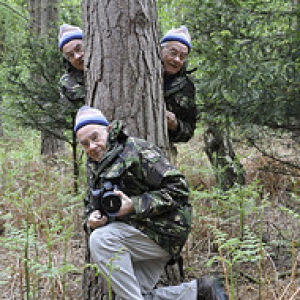Geevor Tin Mine
in the county of Cornwall, UK. It is a museum now and run by a charity.
The sea is in the background, the structure holds the cables and winding structure which lowers metal cages holding up to nine miners, vertically several hundred metres. At different levels horizontal tunnels passed under the sea bed for longer distances. The tunnels would fill with water and a system of pumps cleared a few million gallons per day. The water came from the landward side, not salty, because the sea bed is impervious granite.
Chunks of rock bearing tin were conveyed to the surface to be refined yielding the precious tin. The yield was only 1% of the mined rock.
Power came from electricity to the surface which was used to compress air. The compressed air aided ventilation and powered the equipment down below. The viability of the mine depended on the price of tin and the effect of competitors here and abroad. It closed in 1990.
By all accounts life for the miners was pretty tough, arduous work, long hours, and a risk of injury or death from the explosives or failure of the winding gear.

Comments
Sign in or get an account to comment.


